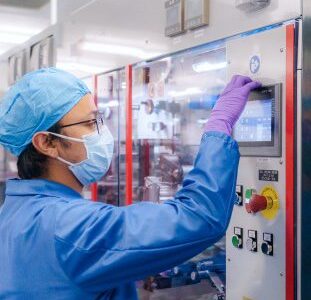Navigator Energy Services’ Carbon Capture And Storage Projects Will Dramatically Increase U.S. Sequestration Capacity.
Navigator Energy Services and Summit Carbon Solutions are joining the effort to combat atmospheric carbon dioxide (CO2) concentration and its effect on the climate. Their large-scale projects spanning multiple states aim to “capture carbon dioxide from local facilities before it reaches the atmosphere, convert it to a liquid form, and transport it via [underground] pipeline to permanent underground sequestration site[s].” These Carbon Capture and Storage (CCS) projects are advancing the global pursuit of mitigating climate change from a lofty goal into reality.
To curb the effects of climate change by 2050, the world must limit the increase in global average temperature to 1.5 degrees Celsius. Net-zero CO2 emissions can help accomplish this feat. CO2 is produced as a byproduct of various manufacturing processes, including refinery, ethanol, and fertilizer plants. These CCS projects will retrofit equipment onto existing plants (without interrupting normal operations), compress and cool the CO2 into liquid, and pump it by pipeline to sequestration sites. It is then injected 3,000 feet or more underground below impermeable rock. Over time, the liquid CO2 calcifies into rock, locking it permanently into place. This technology can give ethanol plants a competitive advantage, as many states provide better pricing benefits to lower-carbon fuels, as much as 20 to 40 cents per gallon, in addition to tax credits.
Carbon capture and storage will play a vital role in the endeavor toward net-zero. CCS is not a new concept and is, in fact, already occurring at scale. “As of November 2019, there [were] 10 CCS facilities in the USA with a combined capacity to capture more than 25 million tons [of CO2] per [year].” McKinsey Quarterly claims that to achieve net-zero, “3.7 billion tons of CCS capacity will be needed by 2050, over 100 [times] the capacity reported in 2019.” It’s a big ask, and companies like Summit and Navigator are progressing forward-thinking projects to get us there.
Headquartered in Dallas TX, Navigator’s CCS project, the Heartland Greenway, will span 5 Midwest states with a 1200-mile pipeline and capacity of 12 million tons of CO2 per year. The project is expected to exceed $2 billion. Carbon dioxide origin sites include Minnesota, South Dakota, Nebraska, Iowa, and Illinois, with sequestration occurring in Illinois. The project must be designed with flexibility in mind, as the Illinois carbon sequestration reservoir is expected to fill with calcified carbon in about 25 years. This time horizon will allow for planning additional sequestration sites.
Valero Energy Corporation (Valero), the largest renewable fuels producer in North America, is partnering with Navigator and will secure most of the initial system capacity. Valero operates 13 petroleum refineries and 13 ethanol plants in the U.S. Ethanol is a renewable fuel made from biomass (plant material) and has many uses but is primarily added to gasoline (~10% by volume) to reduce emissions pollution. An accelerated transition to electric vehicles would reduce the demand for ethanol, but project advocates insist that liquid fuels will play a role in the foreseeable future. Navigator, citing data from the International Energy Agency, says CCS projects can “reduce global carbon dioxide emissions by almost one-fifth.” This is a material impact and could represent substantial progress towards net-zero. CCS growth opportunities exist within the fertilizer, cement, and steel industries, but their carbon waste requires clean-up at additional cost, as opposed to the pure CO2 created in ethanol production.
Carbon sequestration is an exciting technology that can be utilized as a bridge to net-zero. By reducing carbon emissions now, CCS promotes remediation while the market for renewable energy technologies can advance and expand. Coupling carbon remediation efforts with progressive technology and policy efforts can help us achieve the all-important goal of net-zero by 2050.





